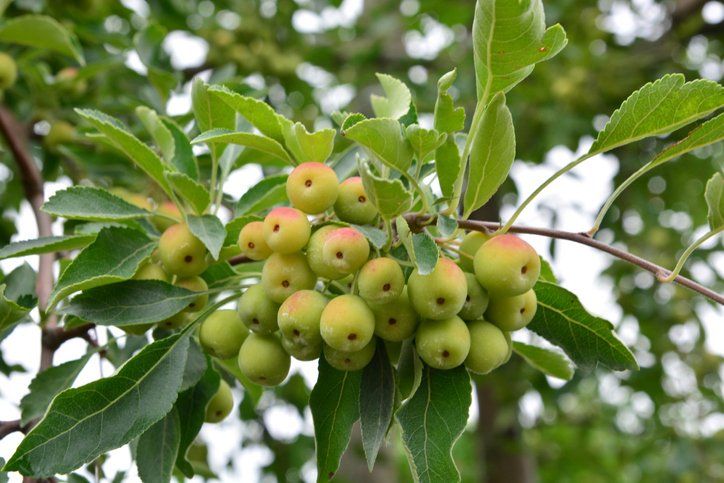Native Fruit Trees for North Carolina Gardens

Trees that produce edible fruit are a very nice addition to a garden. For North Carolina homeowners who also want trees that are easy to care for, native fruit trees offer a benefit double-whammy.
Native fruit trees can be much more resistant to local pest threats in North Carolina's humid environment, as these trees have had to develop defense mechanisms against those pests in order to survive. If you're newer to gardening and are still getting the hang of caring for your trees and other plants, this resiliency helps the trees thrive as you get your bearings.
You can certainly grow native fruit trees alongside non-native fruit trees that grow well in the area. Keep pollination needs in mind to avoid unintentional cross-breeding. Remember to increase the amount of water you give these trees when you first plant them; reduce watering after they've become established.
Paw-Paw Trees
The paw-paw ( Asimina triloba
) is native to the eastern U.S. including North Carolina, and it is determined to produce edible fruit. Not only is it a prolific producer of fruit, but the fruits remain edible even if the tree is hit by a common skin fungus and Japanese beetles. A bonus is that this tree can also be used in pollinator gardens as zebra swallowtail butterfly larvae feed on the tree.
This is a tree that suckers, meaning it produces little shoots that spread out. You can let the suckers grow and create a paw-paw hedge. These trees do like their water, but be sure the soil they're in drains well.
You'll need to plant two different cultivars of paw-paw trees to ensure pollination. These cultivars are easy to find at garden centers. The fruits become edible when they're very soft and look like they're about to rot.
American Persimmons
The persimmons you usually see in markets are the Fuyu and Hachiya varieties from Asia. North Carolina is home to a native American persimmon ( Diospyros virginiana
), however, that grows quite well across the state. It can grow very high, up to 70 feet
, and it can take up to 15 years to produce its first crop of fruit; this is a tree for the long haul. You'll have to test different soil moisture levels - while these trees prefer moist soil, you may find one or two that want drier soil.
When the tree does produce fruit (small, at no more than a couple of inches across), you have to wait until the fruits are orange and almost overripe. Try to eat them when they have even a little bit of green on them, and you're in for a sour surprise. Several cultivars are available, with the Prok variety having excellent taste, according to the North Carolina State University Extension.
American Plums and Chickasaw Plums
Two native plums grow in the region, but be aware that these plums are best for jams and jellies. The American plum ( Prunus americana
, also called the wild plum) and the Chickasaw plum ( Prunus angustifolia
) both produce small, tart plums. The Chickasaw plum can be eaten raw, but it can be acidic.
Do not eat the seeds, stems, or leaves of these trees, as these can be toxic; only the fruit is edible. The Chickasaw plum can be a part of a pollinator garden, and both trees attract birds and other wildlife. Both of these trees can handle everything from full sun to part shade, and once established, they can handle fairly dry soil.
If you'd like help with mulching, trimming, and post-storm care for these trees and more, call a local tree service like Cadieu Tree Experts . Healthy trees form the backbone of a healthy garden.
Location
Payment Options

Contact Us
We will get back to you as soon as possible.
Please try again later.
